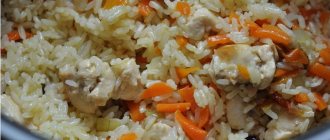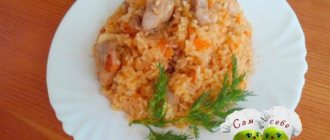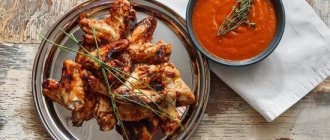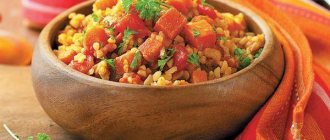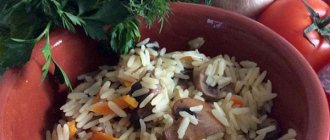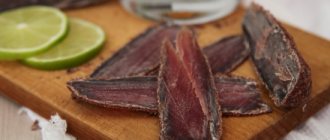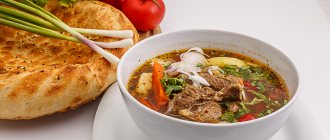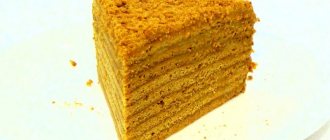Uzbek pilaf in a cauldron is a traditional dish that has become widespread not only in the country of its origin, but has also become known far beyond its borders.
In fact, it has become the hallmark of the countries of Central Asia. Its preparation is a real ritual that requires certain skills and abilities. Moreover, in different parts of the country it is made differently - where the names Fergana, Samarkand, Bukhara, Khorezm come from. What meat do you cook pilaf with?
Pilaf is traditionally prepared in a cauldron over a fire, but a city stove will give no worse results.
We will tell you in detail how to cook pilaf in a cauldron from different ingredients below.
On the grill
To cook the best pilaf on the grill, you need to prepare a sufficiently large container. Instead, a saucepan with a thick bottom will do. The capacity must be from 4 liters.
It is also advisable to get a clean white cotton towel, which it is advisable to place under the lid to prevent excess moisture from evaporating.
So, how to cook pilaf in a cauldron is simple, you only need to take the following quality products:
- Pork – 1 kg.
- Carrots – 800 g.
- Onions – 600 g.
- Rice of a suitable variety - 0.5 kg.
- Fat – 220 g. You can take vegetable, internal lamb or melted pork.
- Garlic – 1 head.
- Sea salt and black pepper - to taste.
- Zira seeds – 1 level teaspoon.
KBJU:
- Calorie content – 156 kcal.
- Proteins – 5 g.
- Fats – 7.4 g.
- Carbohydrates – 18 g.
Recipe step by step:
- It is important to maintain the order of the components. First, the meat is stripped of skin and all films. Cut into portions.
- Then peel all the vegetables. It is advisable to cut the carrots into long strips.
- Cut the onion into half rings, chop the garlic and place everything in the fat preheated in a cauldron. Bring until light golden brown.
- Then add carrots.
- Bring it until half cooked and add meat. If you lay out the carrots in this order and cook them by frying rather than stewing them, you can ensure that they remain intact and will not disintegrate. But in this case you need to maintain the correct temperature.
- Cook the meat over coals for approximately 40 minutes. It is advisable to make them smolder and not burn. This will help avoid burning.
- Place rice on top of the meat. Add as much liquid as needed to completely cover all components.
- Keep the rice on the stove until the water is completely absorbed, approximately this will take about 20 minutes.
Bukhara with carrots and dried fruits
This recipe option can be used as a dinner or Sunday breakfast.
Due to the presence of a large amount of dried fruits, this dish has great nutritional value in terms of micro- and macroelements.
In addition, the appearance of such a dish is very attractive, as can be seen in the photo.
To cook Bukhara pilaf at home, prepare the following components:
- Long grain rice – 300 g.
- Carrots – 1 medium root vegetable.
- 1 large handful of light or dark raisins to choose from.
- Dried smoked prunes and dried apricots - 1 large handful each.
- Onion heads – 1 pc. small size.
- Salt and ground black pepper - to taste.
- Dried barberry berries – 2 tsp.
- Zira – a couple of pinches.
- Tasteless and odorless vegetable oil - 0.15 liters.
KBJU:
- Calorie content – 136 kcal.
- Proteins – 2.5 g.
- Fats – 3.5 g.
- Carbohydrates – 14 g.
Step-by-step recipe for Bukhara pilaf:
- Peel the onion, removing all the husks and, chopping it, send it to fry in a cauldron in preheated fat. This can be done in aluminum or cast iron. At the final stage of frying the vegetable, add spices. Thanks to this sequence, they open up, releasing the aromatic composition into the dish.
- Clean rice is added to the cooking container
- Pour in enough liquid.
- Warm up on low heat for a little more than 10 minutes.
- Add peeled and chopped dried fruits. To prevent them from sticking out when cooking at home, it is better to select a larger cauldron, given that the components will swell as they absorb moisture.
- After about 5-10 minutes from such a bookmark, this simple and tasty pilaf will be ready. Add salt on top of the rice.
With mushrooms and bell peppers
You can prepare pilaf quite simply from unusual ingredients. The beauty of this dish is that the classic recipe can be changed beyond recognition.
Ingredients for the best mushroom pilaf:
- Cereals of a suitable variety - 0.5 kg.
- Onions - approximately 4 medium-sized heads.
- Carrots – 2 pcs.
- Champignons – 0.5 kg.
- Bell pepper – 1 large red piece.
- Garlic – 2 cloves.
- Vegetable oil – 0.1 liters.
- Turmeric – 1/2 teaspoon.
- Marjoram, salt, ground white pepper, basil - to taste.
KBJU:
- Calorie content – 136 kcal.
- Proteins – 4 g.
- Fats – 6 g.
- Carbohydrates – 16.4 g.
Pilaf recipe step by step:
- You need to take an aluminum or, better yet, cast iron cauldron with a minimum capacity of 5 liters.
- Heat the fatty component in it and then add chopped garlic and onion at the same time.
- Bring until golden brown and add carrots.
- Reduce heat to low. Meanwhile, peel the mushrooms and rinse them. Cut in half, especially large ones into 4 parts. Don't chop them too finely, as the pieces will look more attractive in the end. Immediately add dry turmeric, marjoram, etc.
- Add mushrooms to the rest. And cook them in the resulting juice for 5-7 minutes, no more.
- Place the cereal. Be sure to add salt on top of the rice.
- Add prepared water.
- Bring everything to full readiness at low heat intensity. If violent boiling is observed, then use a divider. How much time to spend on preparing cereals - you need to observe for yourself. until the grains become soft, but do not allow them to boil.
Delicious homemade with pork
You can make the best pork recipe at home. So, how to prepare pilaf in this case is not difficult, the main thing is to choose the right tasty and high-quality ingredients. They are the ones who will ensure the success of the dish.
Pilaf components:
- Pork neck – 1 kg.
- Carrots – 0.6 kg.
- Onion – 300 g.
- Garlic – 2 heads.
- Cilantro - 1/2 bunch for decoration.
- The best variety of rice - about 500 grams.
- Spices - to taste.
- Barberry – 2 teaspoons.
- Peppercorns – 2-3 pieces.
- Internal fat – 170 g.
KBJU:
- Calorie content – 156 kcal.
- Proteins – 4.4 g.
- Fats – 8 g.
- Carbohydrates – 19 g.
Recipe:
- You need to choose pork of medium fat content. Neck or fillet would be ideal. Otherwise, it is better to trim off excess fat. Cut the meat into suitable portions.
- Peel and cut the vegetables accordingly. If desired, carrots can be grated on a coarse grater, but still, it is better to make them into strips.
- Pour oil into a container and start frying vegetables. Everything can be done at the same time.
- Add pork and simmer for 0.5 hours. The meat is cooked at minimum power on the stove so that nothing burns.
- Place carrots in the cauldron at the stage when the meat has reached a state of semi-preparedness.
- While the root vegetable is stewing, wash the cereal under tap water. It is advisable to do this until it is no longer cloudy from the starch component. Place it in a container. Add salt. Pour water until it covers everything on top.
- Cook everything for about 15 minutes in a tightly closed container.
Samarkand
This variety requires high-quality lamb and fat tail fat. The pilaf turns out aromatic and has a subtle smell. Despite the many components, this is a simple recipe that a novice housewife can handle. With little effort and proper processing of each component, you get a delicious national dish with excellent taste. It is better to cook in a cauldron over an open fire or grill.
Advice! It is important to follow the recommendations of chefs from Central Asia. They recommend preparing without mixing the ingredients, but laying them in layers.
Although, this is a step that is observed in almost all types of pilaf, with rare exceptions.
Components of pilaf in a cauldron:
- Lamb – 0.8 kg.
- Fat tail fat – 100 g.
- Vegetable oil – 90 ml.
- Carrots – 800 g.
- Onion – 700 g.
- Garlic – 2/3 heads, depending on size.
- Rice – 0.6 kg.
- Zira – 1 heaped teaspoon.
- Barberry - 1/2 teaspoon, depending on taste.
- Salt and ground black pepper - to taste.
KBJU:
- Calorie content – 166 kcal.
- Proteins – 5 g.
- Fats – 17.8 g.
- Carbohydrates – 19.3 g.
The process of preparing pilaf in a lamb cauldron:
- Combine 2 types of fat in a cauldron and melt, avoiding burning.
- Bring the peeled onion to the desired condition in fat.
- Cut the meat, which has previously been cleaned of films and tendons.
- While these vegetables are cooking, peel the root vegetable and cut it into long, thin strips.
- Then add the meat to the onion, cover it with a lid and increase the heat, fry. Remember to stir occasionally to prevent the onions and garlic from burning.
- Then place the chopped root vegetable on top and add water and simmer for 5 minutes. You can add all the spices at the same time as the carrots.
- Rinse the rice thoroughly and place it in a cauldron.
- Pour water on top.
- Wash all the garlic, which has been peeled from the top scales, and bury it in the rice.
- Cover everything tightly and cook for about 20 minutes. Check periodically for taste and density.
Rules for the cooking process.
- During the preparation of pilaf, rice and meat are not mixed. You only need to stir them when they are ready, before serving.
- The secret of the beautiful color of pilaf: it depends not only on the turmeric, but also on the degree of frying of the onion. For example, Turkmen pilaf is white because the onions are fried a little. And Fergana is golden; the onions for it are fried until carrot-colored.
White pilaf and very tasty - The water should cover the rice by about one finger, or 1.5-2 cm. If you add too much water, you will get the usual sticky porridge.
- Also, the secrets of pilaf and the subtleties of its preparation lie in a special shade of taste. For example, to make the dish sweetish, you need to add a little raisins and paprika while preparing zirvak. For a sour taste, add cherry plum or quince.
- Zirvak is salted so that it tastes a little too salty. Rice itself is bland and will absorb all the excess salt. The rice itself is not salted.
- In some types of pilaf, zirvak is considered the basis. This is not a secret, but not many people know how to cook it correctly. To prepare it, lamb fat is placed in a hot cauldron and fried. Then onions, carrots and meat are added. All this is fried at high heat, stirring. After frying, water is added to the zirvak (about a glass for every kilogram of rice) and the food is stewed. At home, fat tail fat is often replaced with vegetable oil.
- In a sealed container in the refrigerator, the dish will last for a maximum of 3-4 days.
Lamb fillet
The recipe for pilaf using a cauldron is a classic one if its main component is lamb.
It is this meat that is most respected among the peoples of the Caucasus. Therefore, if you want to get a truly national dish at home, then you need to get lamb fillet.
Components of pilaf in a cauldron:
- Lamb fillet – 1 kg.
- Onion – 800 g.
- Carrots – 800 g.
- Rice – 600 g.
- Salt and ground pepper - to taste.
- Barberry – 1 tablespoon.
- Zira – 1 teaspoon.
- Fat – 200 g.
KBJU:
- Calorie content – 146 kcal.
- Proteins – 5 g.
- Fats – 6.9 g.
- Carbohydrates – 17.6 g.
Recipe for crumbly pilaf:
- Rinse a piece of meat under the tap and remove excess moisture with paper towels. Cut into portioned cubes approximately 2 cm on a side.
- The onion is cut into thin strips.
- In a casserole, heat the onion in melted fat until it becomes either transparent or slightly golden. The final color of the pilaf will depend on the condition to which it is brought.
- When this happens, pour the pieces of meat into the container and continue cooking. It is advisable to immediately increase the power of the fire so that a golden brown crust forms on the meat. As soon as this happens, you can reduce the intensity of the fire and close the lid until the meat is half cooked.
- After this, cleaned rice is added.
- Bottled or filtered liquid is poured over it.
- Salt the top of the water, distributing the salt evenly.
- Then peel the heads of the garlic, wash it and cut off the roots so as to expose the cloves a little and press it into the rice.
- After this, cook the pilaf for another 15-20 minutes, checking the grain for density.
With rice and chickpeas
Quite often in Central Asia, pilaf is prepared not only from rice. To get the best recipe, you just need to add chickpeas to it. Nowadays it’s easy to find this type of legume in the store. Therefore, you should definitely try this recipe.
Components for a large cauldron:
- Devzira or laser – 0.5 kg.
- Chickpeas – 1 glass.
- Lean or medium fat lamb – 500 g.
- Carrots – 200 g.
- Onions - 2 medium heads.
- Lenten oil without a pronounced taste or smell - 120 g.
- Barberry - 1 tbsp. l.
- Turmeric, coriander, ground black and red pepper, salt - to taste.
KBJU:
- Calorie content – 157 kcal.
- Proteins – 5 g.
- Fats – 7 g.
- Carbohydrates – 19 g.
How to cook pilaf with chickpeas:
- To get a crumbly, flavorful pilaf, it is important to soak the chickpeas in advance. Make this the night before, adding about 1/2 tsp. baking soda into water. This way the chickpeas will cook much faster when cooking pilaf.
- Heat the fat in the selected container and cook the chopped onion until golden brown. You can cut into small cubes or half rings.
- Then add the meat chopped into portions. Fry it until half cooked. This will take approximately 30-35 minutes.
- Then lay out the carrots, cut into strips. You can put all the spices on top, except salt.
- Then, while the carrots are cooking, you need to rinse the rice.
- Place it in a cauldron and place the chickpeas, previously drained of soda water, on top.
- Add salt, spreading evenly over the surface.
- Close the lid and cook for 20-25 minutes.
Differences in Rice Types
The best Uzbek pilaf is considered to be from the Devzira variety. It was developed by breeders, has a beige tint, a sweet taste, and an incredible aroma. In Russia, it can be purchased from sellers at the market; it is not so popular in stores. Pilaf is also made from other types of rice, differing in size, processing method and color.
Brown rice
The variety is processed with minimal loss of nutrients and has a slight nutty flavor. Cooking takes up to 30 minutes, the storage period is shorter than analogs, so you need to take this factor into account when choosing which rice is better for pilaf. Another disadvantage is the high price.
The porridge has an interesting taste, contains few calories and starch. Some chefs combine brown and white grains, giving the dish an unusual look while saving money.
Polished rice
White groats are translucent, round or oblong in shape. After processing, the grains lose a significant amount of beneficial properties, in which they are inferior to the brown variety. Grinding increases the shelf life, and cooking takes no more than 15 minutes.
From duck legs
This Uzbek pilaf in a cauldron will be an ideal addition to any feast. You can serve it effectively if you use a tagine instead of a cauldron. But even prepared in the traditional way, it will definitely delight you with its rich taste and delicious aroma.
Components of real pilaf with duck legs:
- Rice – 1 kg.
- Duck legs – 1 kg.
- Carrots – 800 g.
- Onions – 600 g.
- Hot red pepper – 1 small pod.
- Garlic – 1 large head.
- Zira, salt, ground white pepper, barberry, chopped cilantro - to taste.
- Olive oil – 180 g.
KBJU:
- Calorie content – 156 kcal.
- Proteins – 4.7 g.
- Fats – 8 g.
- Carbohydrates – 17.6 g.
Recipe step by step:
- First you need to work on the duck's legs - remove all the umbilicals that might remain on the skin. Remove all excess pieces of fat. They can be used by adding to vegetable oil. The pilaf will be richer in taste and nutritious. But its calorie content will increase.
- Peel all vegetables and cut accordingly.
- Fry onions and carrots at the same time until half cooked in heated fat.
- Then add all the spices and mix.
- Place the duck legs and cook them over medium heat, stirring occasionally. Then wash the rice and put it in a cauldron. Pour in water to cover the cereal.
- Sprinkle salt evenly on top of the rice. Place the head of garlic deeper.
- Close the lid and cook for another 15-20 minutes. Check at the end to make sure the rice is not too dense.
Recipe for Uzbek pilaf in a cauldron
In this article I will tell you how to properly prepare pilaf in Uzbek style, what components are needed for this and how to use them. One of the main dishes of Asian cuisine is pilaf. Yes, indeed, pilaf is a wonderful dish, known in many families, and not only in Uzbek ones. Are you saying that you know how to cook it properly?
It’s possible, but not a fact, because many people imagine preparing pilaf as the usual process of preparing rice porridge with meat, that is, we put all the ingredients in a pan, fill them with water and cook.
One of the features of high-quality Uzbek-style pilaf is precisely the amount of water, because in order to prevent the rice from boiling and turning into porridge, it is important to be able to select the required amount, and we should not forget that each type of rice requires a different amount of water. Here you need to use not the text of the recipe, but your personal knowledge.
So, if you are going to cook a real, wonderful pilaf, then in this case you should have some culinary skills, since this dish is not easy to prepare for beginners.
In the process of preparing this traditional dish of national Uzbek cuisine, you need to follow certain rules and know some tricks. And only by preparing this dish several times, through trial and error, does each housewife learn the secrets of the art of preparing good Uzbek pilaf, as a result of which each housewife has her own special pilaf on the table, distinguished by its special taste.
When preparing pilaf, it is important to be able to select the strength of the fire. And you should always remember that preparing it is a fairly long process, but the time spent is really worth it.
Real pilaf is cooked not on a stove, but in a cast iron pan over an open fire. The bottom of this dish should be round. The most important thing: in order for the pilaf to turn out good, real, you need to have a cast iron cauldron.
To prepare pilaf in apartment conditions, special pilaf fryers are available for sale. Their whole feature is that their bottom is flat on the outside and round on the inside. This is due, first of all, to the fact that it is not very convenient to place dishes with a round bottom on the stove burner. If you don’t have such utensils, you can use a cast iron pan.
To prepare high-quality and tasty pilaf, you need to take only good products, because high-quality meat and rice are the key to good pilaf.
So, in order to cook good Uzbek pilaf without any problems, you will need:
- Rice -1 kg.
- Meat - 1 kg.
- Carrots - 1 kg.
- Onions - 3-4 pcs.
- Sunflower oil - 200-400 g (you can use lard 250 g)
- Set of spices: barberry, cumin (or seasoning for pilaf)
- Salt - 2 tbsp. spoons
The amount of food can be calculated by proportion, depending on how many people to cook for. If for 2-3 people, then take less. For such pilaf you need to take lamb, but in a pinch, beef will do, although there is an opinion that you can use pork, but without listening to anyone, I advise you to take lamb. It tastes better.
Barberry gives the pilaf a slight sourness, cumin gives the pilaf a wonderful taste, turmeric also contributes to the formation of a brighter taste and beautiful color. Zira and barberry are sold in markets, so finding them should not pose any problems. It is best to take long-grain and large rice.
Let's move on to the preparation itself. It begins by pouring oil into a pre-heated cauldron and heating it to high temperature.
If we use lard, the cauldron is heated to a very high temperature (about 100 degrees). In order to check the temperature of the dish, you can drop a little water on its walls: if it has evaporated, then you can start laying out lard, cut into small cubes. We continue to boil the fat over the fire until gray smoke appears, then reduce the heat and wait until the smoke becomes light. Add salt and half an onion to the fat so that there is no bitterness in the fat.
After this procedure, cut the onion into rings and put it in oil or fat. Now, at the moment when the onion turns golden, lay out the meat, which we first cut into cubes, and immediately salt it so that the meat is soft. This is one of the secrets of preparing good pilaf.
We wait for the moment when it turns rosy, the blood disappears and lay out the carrots cut into medium-sized strips.
Mix. The more carrots, the tastier the pilaf. Fry until it becomes a little softer. Pour in enough water to barely cover the carrots and meat.
Add salt. For 1 kg of rice, 1 kg of meat - 2 tablespoons of salt. Add spices or seasoning for pilaf. Do not cover with lid. Make the fire bigger. When it boils, reduce the heat.
All this without rice is called zirvak. It should be a little salty because the rice will then absorb the salt. When the water has evaporated to the level of the carrots and meat, then you can safely lay out the rice.
The rice should be like glass, not matte. Before laying, you need to rinse the rice well. Leave in water for 40 minutes. Rule: after washing, rice should not remain without water all the time, you need to rinse it and put it away immediately, because it becomes mushy. After laying the rice, level the top. Do not stir. After this, very carefully fill the rice with water about 2 cm above it. Do not cover with lid. Turn on the burner to maximum and cook until the water disappears.
Then we reduce the power to minimum and collect the rice into a mound with a wooden spoon, and then pierce this mound in several places, stick a head of garlic into the rice, cover with a towel to absorb the steam and close with a lid. Do not stir. In this state, leave the dish to simmer for 20-30 minutes. As soon as we are sure that the pilaf is ready, stir it.
As a result, pilaf should not be tough - all its components must melt in your mouth, so you should not skimp on the oil.
The most important rule in cooking pilaf is that it needs to be cooked with soul and then you will get that real pilaf, and not a simple rice porridge, which is usually mistaken for Uzbek pilaf.
People prepare pilaf in different ways. I have described to you one of the options for preparing pilaf. How do you cook pilaf, my dear readers? You can write in the comments. I wish you good health and bon appetit!
With cumin and barberry
Spices play a key role. Classic crumbly pilaf is always prepared with the addition of cumin, barberry, and cilantro. But, if dried ingredients can be added simultaneously with cooking vegetables and meat. Fresh cilantro must be added in a certain order.
To make the dish as nutritious as possible, greens are added at the last stage.
You can simply sprinkle it on the finished pilaf before serving.
Components of pilaf in a cauldron:
- Lamb fillet – 1 kg.
- Rice – 700 g.
- Onion – 500 g.
- Morocco – 800 g.
- Garlic – 2 heads.
- Zira – 1 tsp. with a slide.
- Barberry – 1-2 tbsp.
- Cilantro - 1/2 bunch.
- Turmeric – 1/2 tsp.
- Salt - to taste
KBJU:
- Calorie content – 166 kcal.
- Proteins – 4 g.
- Fats – 7 g.
- Carbohydrates – 16 g.
Step-by-step process for preparing pilaf in a cauldron:
- Bring the oil to a hot state and immediately turn off the heat and bring the chopped vegetables and spices on it to the desired condition.
- At the first stage, you can add not only onions and garlic, but also carrots. It is the simultaneous loading that allows you to achieve the most pronounced taste and aroma in the finished pilaf.
- Then add the meat and continue cooking for 30 minutes.
- Pour in the washed rice and add bottled water. Add salt on top, close the lid and cook for about 20 minutes.
Rating of rice varieties for pilaf
| Name | Place | Growing area | Peculiarities |
| Devzira | 1 |
|
|
| Basmati | 2 |
|
|
| Arborio | 3 |
|
|
| Jasmine | 4 |
|
|
| Indica | 5 |
|
|
| Krasnodar | 6 |
|
|
With pomegranate and quince
Real pilaf can be cooked over coals, on the grill or at home on the stove. Naturally, each method will be slightly different from each other, taking into account the heating characteristics.
But a particularly aromatic version of the dish with a sweet and sour, slightly fruity flavor is obtained in which quince and pomegranate are added as additional components.
Here's what you need to take as components:
- A piece of lamb or pork neck – 1 kg.
- Devzir – 700 g.
- Onions – 400 g.
- Carrots – 700 g.
- Onions – 2 heads.
- Quinces – 1 large piece.
- Pomegranate seeds - approximately 1/2 of a large fruit.
- Spices such as barberry cumin, salt, ground black pepper, ground red pepper - to taste.
- Vegetable oil without a pronounced odor - approximately 200 g.
KBJU:
- Calorie content – 146 kcal.
- Protein – 5.3 g.
- Fat – 8.1 g.
- Carbohydrates – 17.3 g.
Stage-by-stage execution of the national dish:
- Heat the fatty ingredient in a cooking container and fry carrot strips and onion half rings in it until cooked or lightly golden brown.
- After this, simmer the pieces of lamb or pork along with spices for approximately 1/2 hour.
- Place clean rice with the remaining ingredients and add bottled water to cover.
- Press in the washed and lightly peeled heads of garlic. Salt the cereal on top.
- Wash the quince, cut it into slices, like an apple, removing the core and without peeling the skin. Place the wedges on top of the rice. Simmer over low heat for approximately 20 minutes.
Basics of cooking
Pilav is a very ancient dish. The original recipe is believed to have originated in India or the Middle East in the third century BC. And the classic recipe for Uzbek pilaf has become known since the sixteenth century. The principle of preparing this dish is quite simple. Pilaf consists of two parts. The first is called “zirvak”. And the second is cereal. It seems that it could be simpler? However, the success of the entire dish depends on the type of rice. You should not take round cereals, especially those intended for sushi. It contains a lot of gluten, and the pilaf will not come out crumbly. Also, a lot of attention is paid to the components of zirvak. In the Uzbek version of pilaf, the meat must be calcined. Further, unlike other types of this dish, zirvak and rice are combined in a cauldron for further cooking together. In general, in order to prepare real Uzbek pilaf, you need to have knowledge and experience. It’s not for nothing that this particular version of the dish was included in the UNESCO list in 2016 as an intangible heritage of humanity.
